How to Do Consumer Research in Less than 30 Minutes?
Table of contents
How long does consumer research usually take? A quick Google search might tell you 6 to 12 weeks.
But what if I told you there’s a way to do it in under 30 minutes? Sounds too good to be true? Well, it’s not!
Fast and effective consumer research is possible with the right tools and strategies. Keep reading to find out how.
Consumer research is the process of gathering and analyzing information about consumers’ preferences, behaviors, and needs. It helps businesses understand their target market to improve products, services, and marketing strategies. This research can involve surveys, interviews, focus groups, and data analysis.
Traditional consumer research is often a complex, time-consuming process.
It usually involves hiring external agencies or dedicating entire teams to focus on it for weeks.
Let’s face it, that approach is not only expensive but also inefficient.
Fortunately, more efficient market research methods have emerged with advancements in AI software and business intelligence tools.
These automated solutions require fewer resources while delivering results that are just as accurate, if not more precise.
What is consumer research? Definition
Consumer research is all about understanding what makes people tick when they’re deciding what to buy.
Imagine being a detective, but instead of solving crimes, you’re solving the mystery of why someone chooses one product over another.
It involves gathering information on people’s preferences, habits, and reactions to different products or services.
By analyzing this data, companies can figure out how to improve their offerings and better connect with their audience.
In simple terms, consumer research helps businesses get inside their customers’ minds to meet their needs more effectively.
Purposes & benefits of consumer research
- Understand customer needs: Helps businesses learn what their customers truly want and expect.
- Improve products or services: Provides insights on how to enhance existing products or develop new ones based on customer preferences.
- Identify market trends: Keeps companies up to date with changing trends and consumer behavior.
- Reduce risks: Minimizes the chances of launching a product that fails to meet customer expectations or market demand.
- Boost customer satisfaction: Helps tailor products, services, or marketing strategies to better satisfy customer needs.
- Enhance marketing strategies: Allows companies to target the right audience with more effective messaging and promotions.
- Stay competitive: Offers valuable information to help businesses stay ahead of competitors by understanding what drives customer choices.
- Increase profitability: With better product offerings and targeted marketing, businesses can see higher sales and revenue.
How to do consumer research? Methods
There are many approaches to conducting consumer research.
It usually involves data collection (often through interviews), sampling, data analysis, and reporting…
But that is the more complicated option.
I want to introduce a new approach to the consumer research process. It’s an innovative and original method of conducting consumer research.
What are its biggest benefits?
It’s fully automated and involves only 4 simple steps.
Let’s get down to it!
Step 1: Ask AI tools
AI tools are real repositories of knowledge and data. With their help, you can get a whole bunch of useful consumer insights in seconds.
You just need two things: adequate prompting and the right tool.
What I mean by the latter is that, of course, you could use Chat GPT… but did you know that some better AI-powered options are available?
AI Brand Assistant by Brand24 is one of them.
Let’s compare these two solutions and choose the better option for you!
My test prompt is: Analyze consumer preferences for Costa Coffee.
Both tools answered in a detailed way, mentioning several areas. Thus, I will compare the answers bit by bit.
Let’s take Chat GPT as the first focusing on product offering and reception.
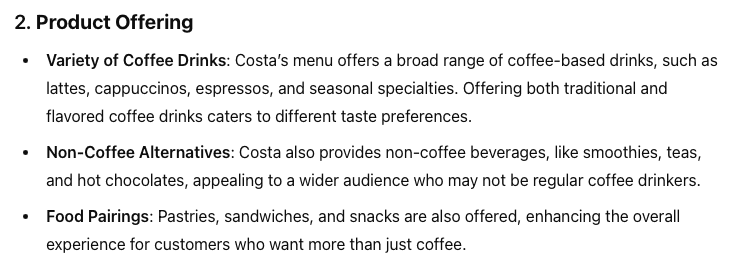
Well, the answer is general, to say the least. It doesn’t provide any market research insights, just general information that everybody at Costa knows.
Let’s give Brand Assistant by Brand24 a chance.
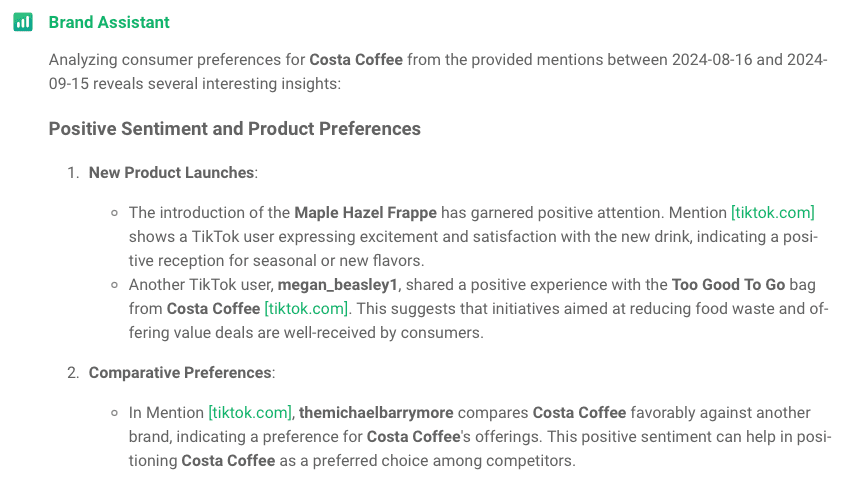
There are several strong sides to this answer:
- It refers to a particular time frame ensuring up-to-date results.
- It is based on data collected through media monitoring by our original tool.
- Every point is referenced so you can see the original source where your client said a particular thing. This way, you can be sure that the tool didn’t hallucinate the answer but based it on real customer behavior data.
- The insights are specific and actionable.
Now, let’s take a look at customer satisfaction and consumer behavior.
While Chat GPT says generally…

Brand24 has A LOT to say.
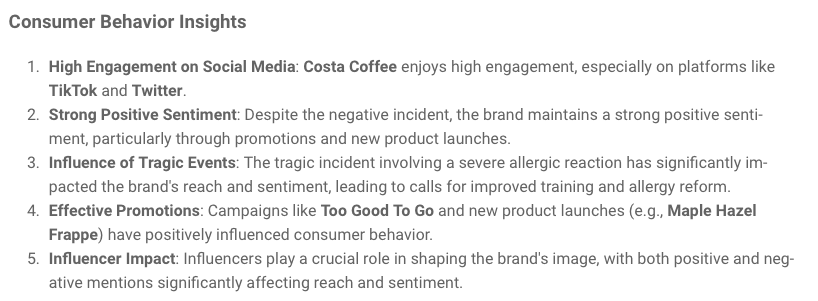
What’s very important is that our Brand Assistant detected a tragic event involving a client’s severe allergic reaction.
This is a key insight into Costa’s customer base and a good nudge to consider allergic people among its buyer personas.
Besides that, our AI tool detected all the key target consumers’ insights, including:
- Social media engagement
- Sentiment analysis
- Consumer perception of the promotional campaigns
- Influencers’ impact on the company
Last but not least, the Brand24 AI-powered Assistant can generate charts.
These visual representations will help you understand your target market and marketing performance in a given period.
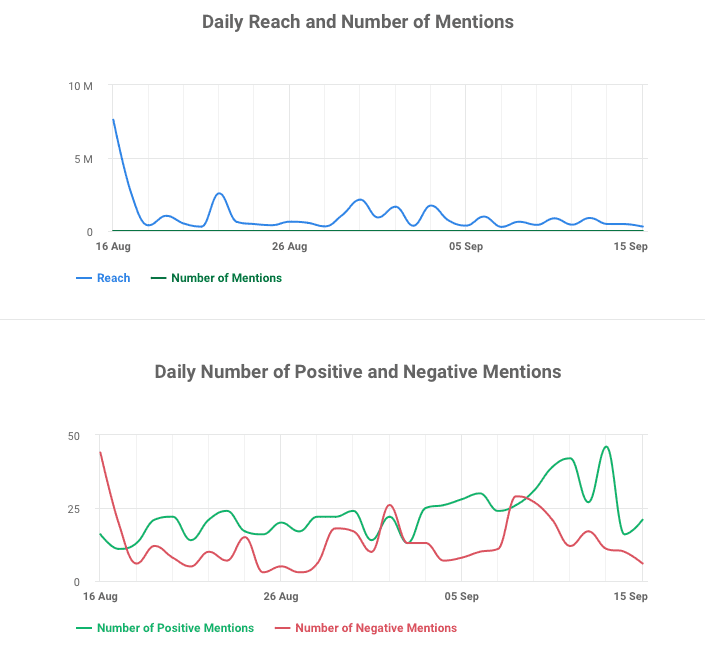
To sum up, both tools seem to work in the same way—they are text-based interfaces, and when you type a question, they answer it.
The main difference is that our AI Brand Assistant is connected to our own data collected via real-time media monitoring.
Plus, our tool always adds references so that you can see the source (mention) cited.
This ensures up-to-date and reliable insights.
Are you interested in what else you can ask our tool about?
Check out the examples below:
- What do consumers dislike about Costa Coffee?

- What are Costa’s strong aspects compared to Starbucks?
- Was customer satisfaction better or worse in the previous period?
- Which brands is Costa Coffee compared to?
- What is the trending topic among the customers?
- Present consumer statistics for August 2024.
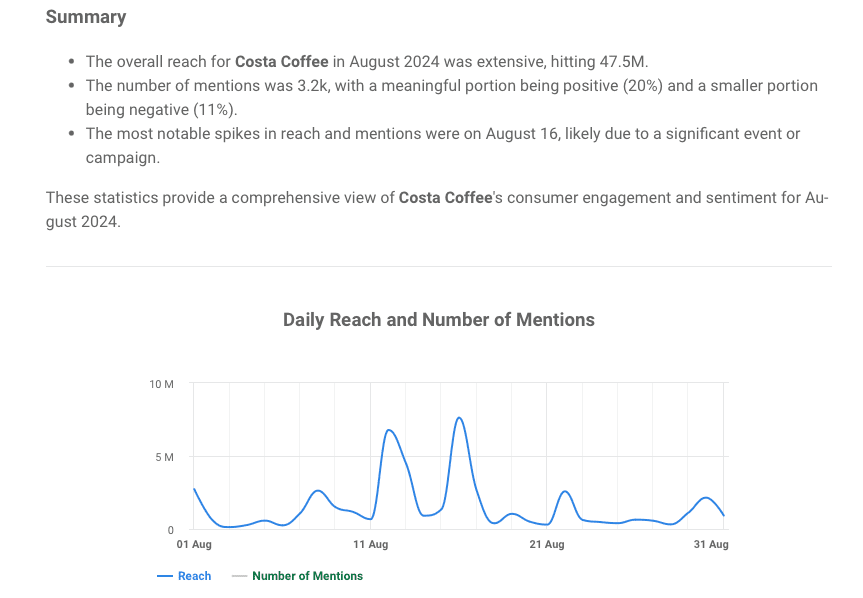
- What is the most mentioned product?
- What time is the target audience most active on TikTok?
Step 2: Ask the target audience
That’s usually one of the most daunting parts of customer research.
You have to design surveys, plan their distribution, and invent strategies to encourage people to actually participate.
Here are some of my secret tips on how to collect customer feedback effectively:
- Ask the right questions: Focus on specific questions that get to the heart of the customer’s experience. Avoid long surveys, and keep it simple!
- Time it right: Request feedback when the customer’s experience is fresh in their mind—right after a purchase or interaction.
- Make it easy: Use simple, accessible platforms like email, in-app surveys, or SMS to make it convenient for customers to respond.
- Incentivize participation: Offer small rewards, such as discounts or freebies, to encourage customers to provide feedback.
- Be genuine: Let customers know their feedback really matters and will be used to improve their experience. It builds trust and increases response rates.
- Follow up: If a customer gives feedback, especially negative, follow up with them to show you’re listening and actively working to improve. This supports building brand loyalty and shows you care.
While surveys are undoubtedly the best way to get precise answers to your specific questions, they are not the only way to receive consumer feedback.
You can also leverage social listening tools.
Setting up a social media monitoring project with a dedicated keyword lets you track all the online mentions of brands, products, and services.
This way, you can easily learn what customers say about you online.
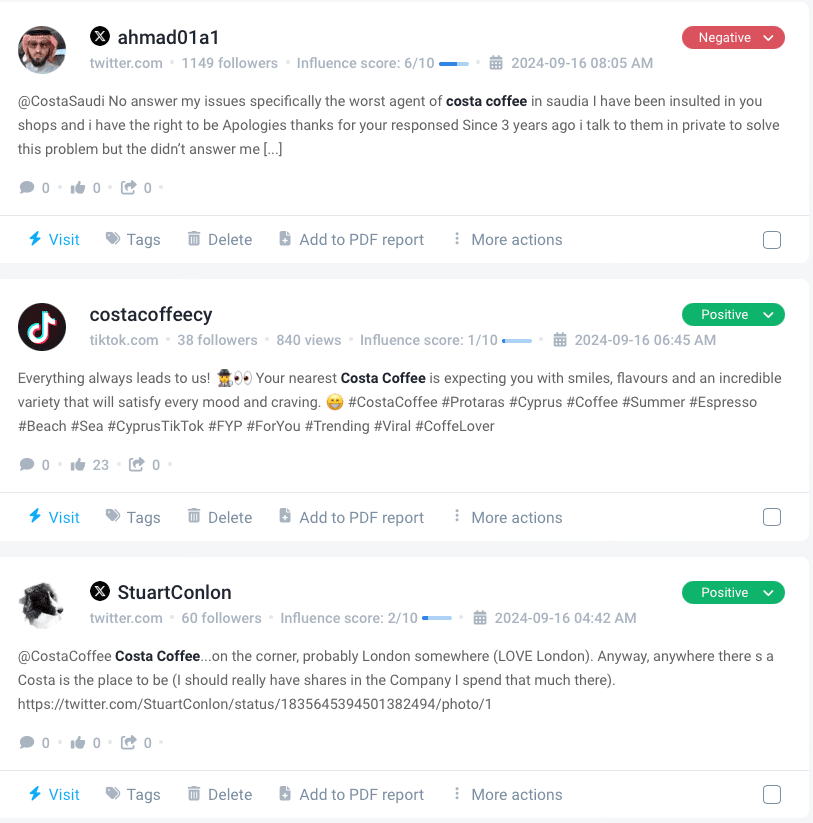
Step 3: Benchmark with competitors
Benchmarking with competitors is crucial in consumer research because it gives you a clear view of where your business stands in the market.
By comparing your products, services, and customer experiences to those of competitors, you can identify gaps, opportunities, and areas for improvement.
It also helps you understand what’s working for others and what consumers are responding to, giving you insights to fine-tune your strategies.
To do this effectively, track competitors’ pricing, product features, customer feedback, and marketing tactics, and use that data to refine your approach and stay competitive.
But you don’t have to do that manually, of course, as that would take ages.
Brand24 is there to save the day.
Our tool allows you to compare key business performance metrics with those of your competitors.
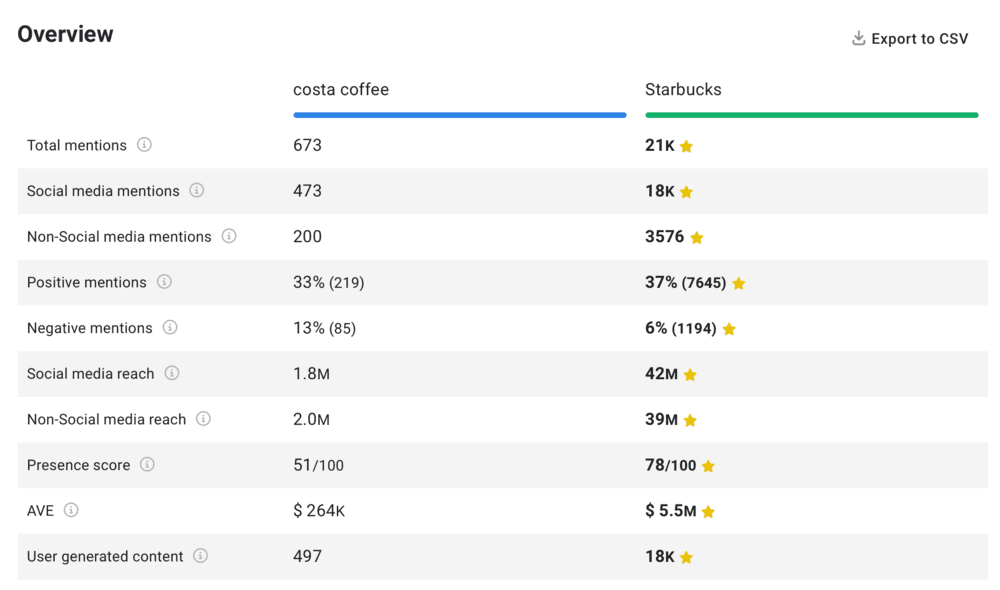
But not only that.
You can still ask our AI-powered Brand Assistant for a detailed competitor analysis.
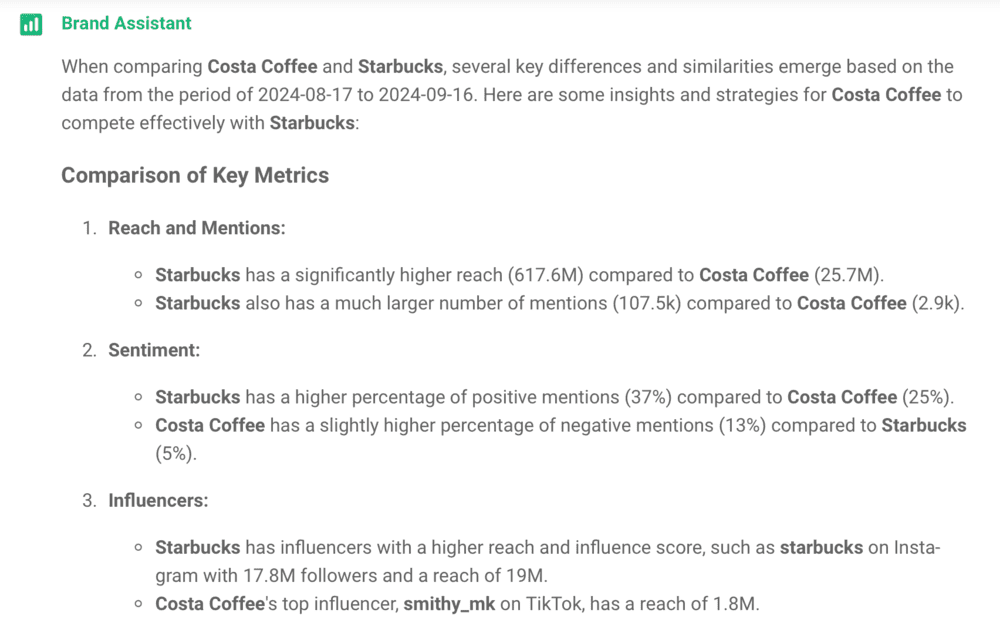
Still, Brand24 doesn’t stop here. Our tool can prepare tips and strategy for your company to win with your competitor in your target market.

Could market research be simpler than that? I don’t think so.
Step 4: Keep on listening
Some might think the consumer research process ends here, but that’s far from the truth!
To protect and grow your business, you need to keep listening to your customers—constantly.
Why?
Because buying behaviors can change, new demographics might emerge that need targeted approaches, or industry trends could shift overnight.
The key takeaway is that conducting consumer research once doesn’t mean you’re finished.
It’s an ongoing cycle of gathering insights, adjusting your strategies, and repeating the process.
Staying in tune with your audience is crucial for long-term success.
Challenges in consumer research
Here are some common challenges in consumer research:
Changing consumer behavior
People’s preferences and habits can shift quickly, making it difficult to keep up with current trends.
Solution
Collect data continuously to ensure the freshest results and a thorough understanding of consumer psychology and habits.
To streamline this task, use media monitoring tools, such as Brand24.
Data overload
With so much data available, it can be hard to sift through and identify what’s truly relevant or valuable.
Solution
Leverage AI software that analyzes data collection for you and provides actionable insights based on their research results.
Bias in responses
Consumers may not always provide honest feedback, either due to social pressure or misunderstanding the questions.
Solution
Peek at your focus group on social media. That’s the first place where people go to share their honest opinions about products and services.
Social listening tools, like Brand24 for example, will support your marketing efforts in this area.
High costs
Traditional research methods like focus groups or in-depth surveys can be expensive and time-consuming.
Solution
Choose intelligent tools that collect both quantitative and qualitative data for you and draw automated conclusions based on analyzed resources.
Technological barriers
Not all companies have access to the latest AI tools or data analysis software, limiting their ability to conduct efficient research.
Solution
That’s why you should not rely on external agencies to conduct your market research.
Choose Brand24, a trusted tool that has specialized in media monitoring for the past 12 years and uses the newest technologies to ensure marketers gain all the needed demographic insights.
Privacy concerns
Balancing the need for customer data with privacy regulations and ethical considerations can be challenging.
Solution
Market research tools like Brand24 rely on publicly available data shared by consumers themselves. Thus, researchers and marketers don’t have to worry about the privacy of customer segments.
Conclusion
In the past, marketers and researchers faced a tough challenge with consumer research.
Today, thanks to innovative tools and strategies, it’s much easier to manage, right?
The key to success lies in leveraging the latest technologies and approaches and letting the right tools do the heavy lifting.
These solutions tackle the biggest hurdles—like data overload, tracking shifting behaviors, and cutting research costs.
So why not give it a shot?
Final thoughts:
- Consumer research involves collecting and analyzing data about consumers’ preferences, behaviors, and needs. It enables businesses to gain insights into their target audience, helping them refine their product, service, and marketing strategy.
- The 4 key steps of customer research include:
- Asking AI tools
- Asking your target audience
- Benchmarking with competitors
- Listening continuously
- Leverage AI-powered tools for precise and fast market research. This software addresses all customer research challenges and effectively supports your marketing efforts.


